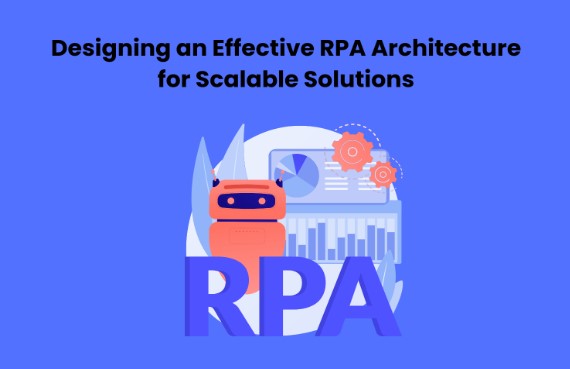In automation, Robotic Process Automation (RPA) has emerged as a transformative force, streamlining business processes and increasing operational efficiency. As organizations increasingly recognize the value of RPA, designing a robust RPA Architecture becomes pivotal for scalable and sustainable solutions. In this blog, we will explore the intricacies of designing an effective RPA architecture, emphasizing scalability. Whether you are enrolled in Robotic Process Automation Courses or are an experienced automation professional, understanding the architecture is crucial for harnessing the full potential of RPA.
Navigating the RPA Landscape
RPA involves using software robots or “bots” to automate repetitive and rule-based tasks, mimicking human actions within digital systems. How well, how scalable, and how adaptable the whole RPA solution is depending on the architecture that these bots are built on.
Key Components of Effective RPA Architecture
Here are the Key Components of Effective RPA Architecture:
Bot Orchestration and Management: An efficient RPA architecture begins with a strong layer for bot management and orchestration. Bot scheduling, execution, and monitoring are all managed by this component. A centralised dashboard for monitoring and reporting is provided, and jobs are allocated according to priorities and availability, ensuring that bots run effortlessly.
Bot Development Environment: The bot development environment is where automation scripts are created and customized. Logic, workflow design, and action recording are all part of it. To facilitate the effective creation and modification of automation scripts, RPA developers want a development environment that is both feature-rich and easy to use.
Bot Deployment and Integration: Once bots are developed, the architecture should facilitate easy deployment to target environments. Integrating with pre-existing systems, apps, and databases is vital for the smooth running of automated processes. An efficient RPA design promotes interoperability by ensuring compatibility with several systems.
Security Framework: Security is a paramount consideration in RPA architecture, especially when automating sensitive data tasks. Secure communication protocols, access restrictions, and data encryption should all be part of the architecture’s rigorous security features. A critical component of the security architecture is conformity with applicable laws and industry standards.
Scalability and Resource Management: Scalability is critical, especially as organizations expand their use of RPA. It is important that the architecture can scale to accommodate more bots and heavier workloads in the future. The RPA solution’s scalability depends on efficient resource management, which involves optimising computer resources and balancing workloads.
Cognitive Capabilities and AI Integration: To enhance the capabilities of RPA, integrating cognitive technologies and artificial intelligence (AI) is essential. Bots may take on more complicated jobs, learn from their mistakes, and make smarter judgements with the help of AI-driven capabilities like natural language processing and machine learning. These sophisticated skills should be able to be integrated with the help of the architecture.
Monitoring and Analytics: A comprehensive monitoring and analytics component is integral for assessing bots’ performance, identifying bottlenecks, and optimizing automation workflows. Gain valuable insights into the RPA solution’s efficiency and efficacy via real-time dashboards, logging systems, and analytics tools.
Audit Trail and Compliance: Maintaining a detailed audit trail is crucial for compliance, regulatory requirements, and troubleshooting. Organisations should be able to track every action bots take by including systems to capture and store activity logs in the architecture. Transparency and accountability are both improved by this audit trail.
User Interface Interaction: RPA often involves interaction with user interfaces, and the architecture should support effective UI automation. This encompasses proficiency with various user interfaces, including those found in online apps, desktop programs, and simulated settings. Various needs for user interface automation may be met by an adaptable design.
Lifecycle Management: Managing the lifecycle of RPA assets, including automation scripts, configurations, and versions, is critical for maintaining a stable and reliable solution. The architecture has to handle versions, changes, and rollbacks easily so that everything runs smoothly throughout the lifespan.
The Role of Robotic Process Automation Courses
Courses in robotic process automation are essential for anybody who wants to learn the ins and outs of RPA architecture. The courses provide a well-organized curriculum that covers the fundamentals, best practices, and practical applications of RPA architecture design and implementation. Gain the knowledge and abilities to handle the complexity of RPA deployment and scaling via practical training and real-world situations.
Conclusion
It is necessary to take a comprehensive strategy that considers technical, operational, and strategic factors while designing an RPA architecture for scalable solutions. A solid grasp of the essential elements and recommended practices is crucial for achieving success in Advanced Technology Courses, whether you are taking classes in the subject or actively participating in its implementation. Building systems prioritising scalability, security, and flexibility allows organisations to tackle their present and future automation demands. Dedication to fully using automation, ongoing learning, and strategic planning will lead you on an ever-changing path to scalable RPA solutions.

